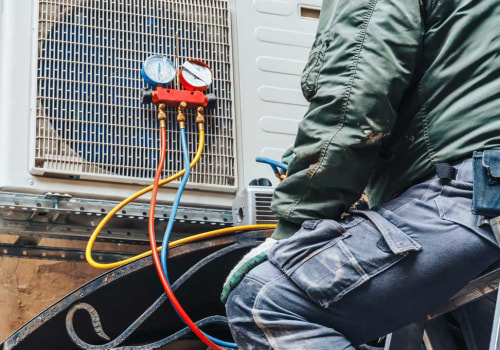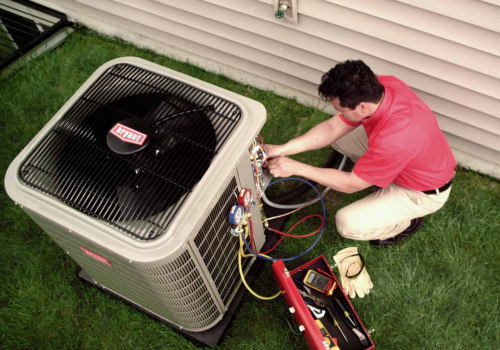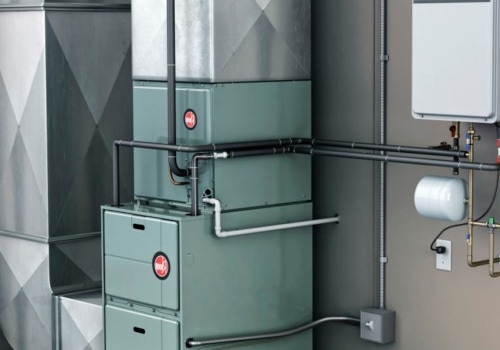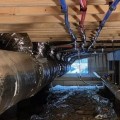Keeping your air conditioner in top shape is essential for staying cool during the summer months. Unfortunately, many AC units can suffer from refrigerant leaks, which can lead to expensive repair bills. But before you call in a professional, there are a few steps you can take to check your refrigerant levels and determine if you can repair the issue on your own. In this article, we'll provide some tips for checking refrigerant levels and how to know when it's time to call in a professional.
Measuring Refrigerant Pressure
Measuring refrigerant pressure is an important step in checking your refrigerant levels.The best way to measure the pressure of your refrigerant is with a manifold gauge set. Manifold gauge sets are designed to measure the pressure and temperature of the refrigerant inside your air conditioner. To measure the pressure of your refrigerant, you'll need to attach the manifold gauge set to your air conditioner. Start by connecting one of the hoses from the manifold gauge set to the service port on your air conditioner.
Connect the other hose to a vacuum pump. The pump will pull out any excess refrigerant in the system, so that you can accurately measure the pressure. Once the hoses are connected, you can take a reading from the manifold gauge set. On the face of the gauge, you'll see two dials, one for low and one for high pressure.
The low pressure dial will tell you how much pressure is in the system when it's not running, while the high pressure dial will tell you how much pressure is in the system when it's running. By comparing the readings on both dials, you can determine if the refrigerant level is too low or too high. It's important to remember that these readings are only accurate if all of your air conditioning components are working correctly. If any of the parts are malfunctioning, then you may get an inaccurate reading. Checking your refrigerant levels with a manifold gauge set is an easy way to make sure your air conditioner is running efficiently and reliably. By keeping your refrigerant levels at the right level, you can avoid costly repairs and ensure your air conditioner runs smoothly for years to come.
Signs of Low Refrigerant Levels
Low refrigerant levels in your air conditioner can cause a variety of problems, including short cycling, poor cooling, and poor air flow.If you notice any of the following signs, it could indicate that your refrigerant levels are low:Decreased cooling capacityIf your air conditioner is not cooling as much as it used to, it could be a sign that the refrigerant levels are low. This is especially true if other components such as the fan motor, condenser coil, and compressor seem to be working properly.
Higher energy bills
If you notice an increase in your energy bills without any other explanation, it could be caused by low refrigerant levels. Low refrigerant levels force the air conditioner to work harder, which can cause your energy bills to spike.Strange noises
If you hear any strange noises coming from your air conditioner, it could be a sign that the refrigerant levels are low. These noises can range from a hissing sound to a rattling or shaking noise.Unusual smells
If you smell a burning or chemical-like odor coming from your air conditioner, it could be a sign that the refrigerant levels are low.This smell is usually caused by the refrigerant itself, which can leak when the levels are too low.
Frost or ice buildup
If you notice frost or ice buildup on the inside or outside of your air conditioner, it could be a sign that the refrigerant levels are low. Low refrigerant levels can cause the unit to freeze up, which can lead to costly repairs.Tips for Keeping Refrigerant Levels in Check
Maintaining proper refrigerant levels in your air conditioner is essential for keeping it running efficiently and reliably. To avoid costly repairs, it’s important to regularly check your refrigerant levels. Here are some tips for keeping them at the right level: Check your filter regularly: A clogged or dirty filter can restrict the flow of air and lead to low refrigerant levels.Make sure to check your filter monthly and change it as needed.
Check the condition of your coils: Dirty or damaged coils can also lead to low refrigerant levels. Inspect your evaporator and condenser coils on a regular basis and clean them if necessary.
Check for air leaks: A leak in the air ducts or compressor can cause refrigerant levels to drop.
Make sure to check the entire system for any signs of wear or damage and repair any leaks as soon as possible.
Keep an eye on pressure: Low pressure can be an indication of a refrigerant leak. Make sure to monitor the system’s pressure gauge and adjust the level as needed.
Monitor your energy bills: Unexplained increases in energy bills could be a sign of low refrigerant levels.
If you notice a sudden jump in your energy bills, it may be time to check the levels.
Schedule regular maintenance: The best way to keep your refrigerant levels in check is to have a professional service your unit on a regular basis. This will help ensure that all parts of the system are functioning properly and that any potential problems are caught before they become serious.











